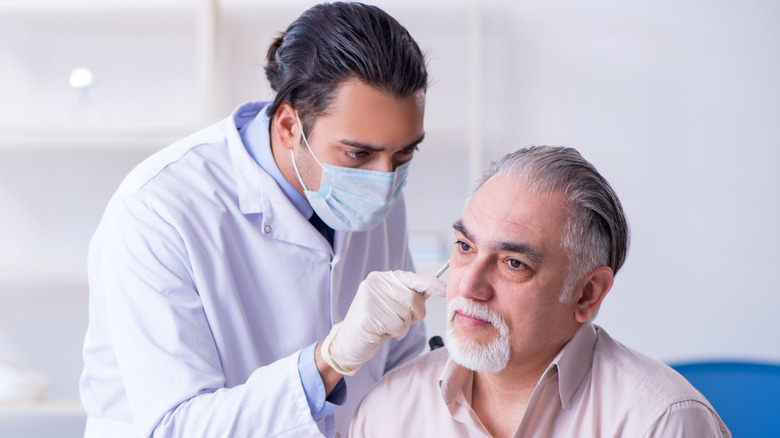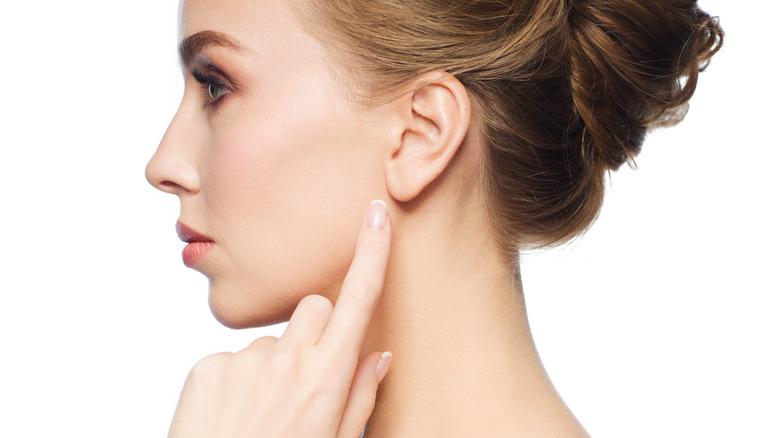Is It Safe To Clean Your Ears With Hydrogen Peroxide?
TikTok users have been swearing that pouring hydrogen peroxide into their ears is the best way to clean them. TikTok user Ayisha Friedman-Negrín (@ayishafrita) has a video with over 2 million likes, showing people how to "properly" clean their ears. She puts her head down on a table with a towel on it, and pours some hydrogen peroxide into her ear. She says you will feel it bubble and that it's "separating all the earwax," and when she flips, it will come out. Ayisha shows a close-up of her ear, and there are bubbles. Afterward, she then puts the towel over her ear and flips her head to allow it to drain.
In another TikTok video, user Daphne Gonzales (@daphnemaegonzales) recorded herself at the emergency room because she couldn't hear after trying the method. The video caption explains that she had an "epic fail" of trying to clean her ears with peroxide. A medical professional can be seen helping drain the fluid from her ear, and it's almost enough to fill up the basin she's holding. When she's done, Daphne can hear again.
So, is it safe to clean your ears with hydrogen peroxide, or will you end up at the hospital like Daphne?
Cleaning your ears properly and safely
Do you need to clean your ears at all? It depends. Your ears produce earwax, which helps protect your inner ear from bacteria and fungi — both can cause ear infections. Your jaw movements move earwax to the outer part of your ear, naturally cleaning out the excess. You can get a buildup of earwax, which can reduce your ability to hear. Earplugs, earbuds, hearing aids, or using cotton swabs in your ears can create a buildup (via the Institute for Quality and Efficiency in Health Care).
Earwax buildup can cause tinnitus, hearing loss, dizziness, earaches, and itchiness, according to StatPearls. If you have these symptoms, you need to see your doctor. They might give you a prescription for carbamide peroxide ear drops, and yes, they have some peroxide in them. These eardrops will soften the buildup of earwax and help it move out. If necessary, your doctor will use an irrigation method to get it out, as they did with Daphne Gonzales. Manual removal is also a possibility.
You can clean your outer ears with a washcloth and some hydrogen peroxide, glycerin, or mineral oil. Gently wipe on the outer part of your ear. Avoid cotton swabs, ear candles, or putting anything else into your ears (via WebMD).


